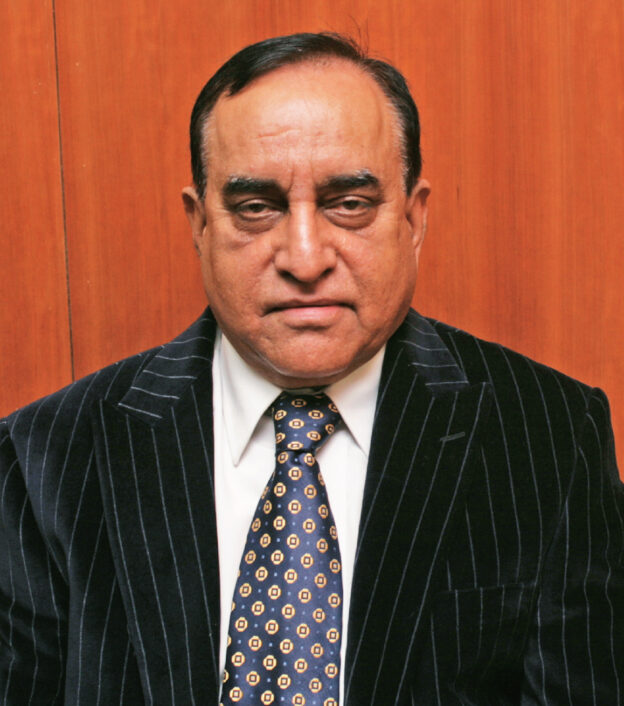After the Prime Minister’s call to blend 20% of blending of petroleum with ethanol from 2030 there is an urgent rush to ramp up the capacity and increase the type of feedstock required to boost production to meet the required amount of ethanol needed to blend up to 20% of ethanol. In an interview with Ambrosia V. Raina, Director General, AIDA outlines the roadmap to achieve this along with the newer distilleries planned in the next few years.
What is the current production capacity of ethanol in India?
The total ethanol production capacity is 473 crore litres that includes grain-based ethanol, molasses based and others sources. Alcohol production capacity out of molasses is 693 crore litres whereas grain based capacity is 258 crore litres. This production capacity is expected to increase further with nearly 15-20 new distilleries coming in the next few years with the help of the Indian Government. In order to boost the growth the govt. has provided financial assistance on interest subvention.
Can you tell us more on the new Distilleries that are upcoming in the next few years?
The new distilleries are grain based only with 15-20 new ones coming into the market and approximately 25-30 existing distilleries expanding their capacities. Also with the change in the guidelines you can now put up a new distillery with more ease. Earlier it would take longer time to get permissions and clearances. But now the Government has allowed all permissions, all guarantees up to the capacity of 200 KLPD for grain based and 100 KLPD for molasses based can be given by the State Governments. Since ethanol and high alcohol (above 95%) comes under the purview of the Central Government putting up an ethanol distillery doesn’t have any challenges unless liquor is produced.
Where are the new distilleries now being focussed in UP and Maharashtra or elsewhere also?
There is no grain distillery in the state of UP. Primarily it is in Punjab but now they are coming up. The grain is there. Other distilleries are resisting. UP will come over, Bihar will come over new one. Even Odisha has a new distillery.
Beside grain what other sources are being experimented on?
Apart from grain Maize and Rice are being experimented upon since these are considered as damaged food grains which are not edible for human beings. However, these are currently in short supply. We have introduced good rice also because you have to purchase it from Food Corporation of India (FCI). The basis of these purchases are on rates that are already determined/fixed based on the feedstock. For instance the rates are fixed at Rs. 20 per kg. or Rs. 2000 per quintal by the Food Corporation of India (FCI). If you purchase it from sugar cane juice the rate is Rs.62.65 per litre of ethanol. If it is molasses because sugar supply is in surplus it is Rs. 57.61. The rates for General Molasses is Rs.45.69 whereas damaged food grain that includes rice, maize, jowar, bajra etc are priced at Rs.51.55.
What are the benefits of manufacturing Ethanol?
The benefits of manufacturing ethanol is that there is no limit to the supply. The more you can supply the better it is. For instance if you can supply 1000 litres or 1 crore litres the government welcomes that. The rates are fixed for purchase by petroleum companies, which includes – Bharat Petroleum, Hindustan Petroleum and Indian Oil. Also your payments are assured to be given in 15 days, which has reduced from the earlier timeline of 30 days.
Will this short supply affect the liquor industry?
The ENA prices have also gone up with the availability at Rs.50-52 per litre from where you produce alcohol. The prices have already increased by more than 5%. ENA is Extra Neutral Alcohol which is used for the production of better quality of alcohol and normally not used in the production of country liquor. The total requirement of alcohol by the year 2025 is 1350 crore litres. Out of these for liquor and other purposes we need about 334 crore litres. For liquor and industrial purposes like chemicals etc. and the balance 1016 crore litres will be for ethanol. Out of the total estimated requirement of 1016 crore litres the sugar industry will give 684 crore litres and ethanol from grain will be 666 crore litres by 2025.
What are the challenges that distilleries face for increasing the targeted alcohol production?
The biggest challenge is to achieve the target of 20% by 2025 since originally that plan was to achieve it by 2030 which was upped to 2025. The only downside is that if we achieve these numbers then there might be a shortage of feedstock.
How much of this target can be achieved realistically?
We can achieve about 75% – 80% of the target. There won’t be any short supply for liquor production because the governments are strict. Nowadays’ the government is not giving molasses which is under State Governments. The moment molasses is produced they will make a reservation and allot it for the country liquor. Even if there is shortage of total supply I don’t see any difficulty for the liquor production because the State Governments are taking care of that thing.


